- ارسال 24 ساعته در تهران
- ارسال به شهرستان در 2 تا 4 روز کاری
- بسته بندی ایمن
- گارانتی بازگشت کالا
- پشتبیانی 7 روز و 24 ساعته
کتاب Sejong Korean 2
توضیح کوتاه در رابطه با محتوای کتاب:
♦ دانلود فایل صوتی کتاب ♦
کتب Sejong Korean شامل کتاب اصلی و کتاب کار (work book ) می باشند .
اطلاعات کتاب:
| نویسنده |
National Korean Language Institute |
|---|---|
| ناشر |
King Sejong Institute |
| شابک |
9791185872568 |
| نوع جلد |
شومیز |
| قطع کتاب |
رحلی |
| نوع چاپ |
کتاب اصلی رنگی * کتاب کار سیاه سفید |
| تعداد صفحات |
188 |
700,000 تومان قیمت اصلی 700,000 تومان بود.350,000 تومانقیمت فعلی 350,000 تومان است.
فرق چاپ دیجیتال با افست چیست؟
چاپ دیجیتال بیشتر برای تیراژ پایین و چاپ سریع بهکار میرود. در این روش، فایل مستقیماً از کامپیوتر روی دستگاه چاپ منتقل میشود و برای چاپ چند جلد کتاب یا نمونه اولیه بسیار مناسب است.
اما چاپ افست برای تیراژ بالا استفاده میشود و کیفیت رنگ و جزئیات در آن بسیار بالاتر است. در چاپ افست ابتدا زینک تهیه میشود و سپس طرح روی کاغذ منتقل میگردد. این روش برای چاپهای حرفهای و اقتصادی در تعداد زیاد کاربرد دارد.
تفاوت قطع وزیری و رحلی در کتاب چیست؟
قطع وزیری یکی از رایجترین اندازههای کتاب است و ابعادی حدود ۲۴ در ۱۷ سانتیمتر دارد. این نوع قطع برای کتابهای درسی، دانشگاهی و آموزشی بسیار پرکاربرد است.
اما قطع رحلی بزرگتر بوده و معمولاً اندازه آن ۲۹ در ۲۱ سانتیمتر یا حتی بیشتر است. این قطع برای کتابهای تصویری، زبان، فرهنگ لغت و کتابهای آموزشی با جزئیات زیاد استفاده میشود تا خوانایی و فضای صفحه بیشتر باشد.
تفاوت جلد سخت و جلد نرم چیست؟
کتاب با جلد سخت (Hardcover) دارای رویهای محکم از جنس مقوای ضخیم یا گالینگور است که با روکش سلفون یا پارچه پوشانده میشود. این نوع جلد دوام بسیار بالایی دارد و برای کتابهای نفیس، مرجع یا هدیهای انتخاب میشود.
در مقابل، جلد نرم (Paperback) از مقوای نازکتر ساخته شده و سبکتر و اقتصادیتر است. بیشتر کتابهای آموزشی و رمانها با جلد نرم چاپ میشوند.
تفاوت کاغذ تحریر، بالک و گلاسه چیست؟
کاغذ تحریر (Wood-free Paper)
کاغذ تحریر متداولترین نوع در چاپ کتاب است. رنگی سفید و سطحی مات دارد که باعث میشود چشم هنگام مطالعه خسته نشود.
این نوع کاغذ برای کتابهای درسی، دانشگاهی، آموزشی و رمانها بسیار مناسب است.
ویژگیها:
- رنگ سفید و طبیعی
- ضخامت و استحکام مناسب
- جذب خوب جوهر چاپ
- مناسب برای نوشتن و یادداشتبرداری
کاغذ بالک (Book Paper / Bulky Paper)
کاغذ بالک کمی ضخیمتر و سبکتر از کاغذ تحریر است و معمولاً رنگ آن کرم یا نخودی است.
در نتیجه هنگام مطالعه، نور کمتری منعکس میشود و چشم کمتر خسته میشود. به همین دلیل در کتابهای حجیم مثل رمانهای طولانی یا منابع آموزشی پرصفحه، بسیار محبوب است.
ویژگیها:
- رنگ گرم (کرم یا نخودی)
- سبکتر از تحریر
- حس طبیعیتر هنگام ورق زدن
- مناسب برای مطالعه طولانیمدت
کاغذ تحریر (Wood-free Paper)
کاغذ گلاسه سطحی براق و صاف دارد که رنگها را بسیار زنده و درخشان نمایش میدهد.
این نوع کاغذ بیشتر برای کتابهای تصویری، کاتالوگها، مجلات رنگی و کتابهای آموزشی تصویردار استفاده میشود.
ویژگیها:
- سطح براق و صاف
- نمایش شفاف رنگها
- وزن نسبتاً بالا
- مناسب برای چاپ تصاویر باکیفیت
- ارسال 24 ساعته در تهران
- ارسال به شهرستان در 2 تا 4 روز کاری
- بسته بندی ایمن
- گارانتی بازگشت کالا
- پشتبیانی 7 روز و 24 ساعته
کتاب Sejong Korean 2
کتاب Sejong Korean 2 مطالب جالب و منظم یادگیری را برای بهبود مهارت های ارتباطی زبان آموزان کره ای و محتوای فرهنگی ارائه می دهد که به آنها امکان می دهد طیف گسترده ای از فرهنگ کره ای را تجربه کنند.
این است که با توجه به وضعیت زبان آموزان محلی کره در خانه و خارج از کشور از وظایف عملی تشکیل شده است. همچنین حاوی مطالب متنوعی برای یادگیری متعادل از فعالیتهای ارتباطی و عناصر زبانی برای بهبود یکنواخت تسلط و دقت است.
برای درک صحیح جامعه و فرهنگ کره ای از دیدگاه متقابل فرهنگی ، تهیه مطالب عملی و اطلاعات فرهنگی لازم است تا یادگیری فرهنگی از هر دو جهت انجام شود.
این یک مزیت بزرگ است که قادر به یادگیری زبان کره ای از طریق سخنرانی هایی که در رابطه با برنامه یادگیری Nuri-Sejong Haengdang است که به زبان های مختلف ترجمه شده است.
توضیحات کتاب
کتاب Sejong Korean 2 دارای 14 واحد و 4 و تعداد واژگان در هر واحد حدود 30 و تعداد کل واژگان کتاب درسی 392 است. واژگان بر اساس فراوانی و دشواری مربوط به موضوع و فعالیت ارتباطی انتخاب شده است. واحد. در هر واحد دو گرامر وجود دارد و تعداد کل موارد گرامری کتاب درسی 28 مورد است. علاوه بر این، واحد فرهنگ به گونه ای طراحی شده است که در حدود 10 دقیقه در واحد مربوطه که موضوع را به اشتراک می گذارد یا در واحد جداگانه ای در آن به طور ساده برخورد شود.
فرهنگ کره ای
- فرهنگ کره میراث مشترک فرهنگی و تاریخی کره و منچوری جنوبی است. کره ایها به عنوان یکی از قدیمیترین فرهنگهای پایدار در جهان، روایتهای سنتی خود را به روشهای مختلفی گذراندهاند. از اواسط قرن بیستم، کره بین کشورهای کره شمالی و کره جنوبی تقسیم شدهاست، و امروز منجر به اختلافات فرهنگی زیادی گردیدهاست. قبل از پادشاهی چوسان، عمل شامانیسم کره ای عمیقاً در فرهنگ کره ای ریشه داشت.
-
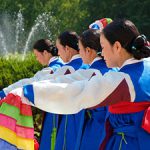
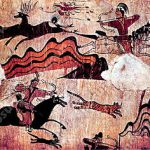
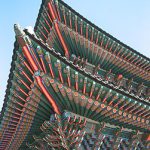
رقص
- در کره، بین رقص درباری و رقص مردمی تفاوت وجود دارد. رقصهای درباری معمولاً تحت عنوان (jeongjaemu) است که در میهمانیها اجرا میشود که در آیینهای کنفوسیایی کره ای انجام میشود. Jeongjaemu به رقصهای بومی و اشکال وارد شده از آسیای میانه و چین تقسیم میشود. ایلو به رقص غیرنظامی (문무، munmu) و رقص نظامی (무무، mumu) تقسیم میشود. در کره نمایشنامه و رقص با نقاب در بسیاری از مناطق منطقه ای کره انجام میشود. لباس سنتی جنس، نوع خاصی از لباس است که زنان در جشنوارهها میپوشند که به رنگهای صورتی و با چندین نماد در اطراف ناحیه گردن آن است.کتاب Sejong Korean 2
- رقص سنتی رقصهای دربار در بسیاری از تولیدات معاصر منعکس شدهاست. تککیون یک هنر رزمی سنتی کرهای است که نخستین اشاره به آن به دوران پادشاهی جوسان مربوط میشود. رشتهٔ تکواندو و برخی دیگر از رشتههای رزمی مدرن کرهای با اقتباس از تکیون پایهگذاری شدهاند. حرکات پویا و روان پا از ویژگیهای این سبک رزمی کرهای است. تککیون شامل مجموعهای از ضربات لگد، مشت و آرنج، حمله به نقاط حساس بدن، و فنون پرتابی و گلاویزی میشود.
نقاشی
- تیراندازی با کمان اسب کره ای در قرن پنجم نخستین نقاشیهای موجود در شبه جزیره کره، از سنگنگارههای دوران ماقبل تاریخ است. با ورود بودیسم از هند از طریق چین، تکنیکهای مختلفی معرفی شد. این تکنیکها به سرعت خود را به عنوان تکنیکهای اصلی معرفی کردند، اما تکنیکهای بومی هنوز وجود دارند. در میان آنها نقاشیهای دیواری مقبره گوگوریو قرار داشت. این نقاشیهای دیواری در داخل بسیاری از مقبرهها، بینشی ارزشمند از مراسم، جنگ، معماری و زندگی روزمره مردم باستان گوگوریو است. پادشاهی بالهایی، حکومت پس از گوگوریو، بسیاری از عناصر سنتی گوگوریو را جذب کرد.
- گرایش به طبیعتگرایی با موضوعاتی مانند مناظر واقع بینانه به ویژه گلها و پرندگان محبوب است. جوهر رایجترین ماده مورد استفاده است و روی کاغذ توت یا ابریشم نقاشی میشود. در قرن ۱۸ام تکنیکهای بومی بویژه در خوشنویسی و حکاکی مهر و موم پیشرفته بودند. در طول دوره پادشاهی چوسان، ژانرهای جدید نقاشی کره ای مانند چاکگوری chaekgeori (نقاشی از کتاب) و مونجادو munjado (نقاشی از حروف) رونق گرفت.کتاب Sejong Korean 2
صنایع دستی
- مجموعه صنایع دستی منحصر به فردی در کره تولید میشود. بیشتر صنایع دستی برای استفاده روزمره خاص ایجاد میشود، و اغلب به جای زیباییشناسی، اولویت آنها کاربری است. بهطور سنتی، مواد اصلی، فلز، چوب، پارچه، لاک و ظروف سفالی از مواد اصلی استفاده شده بودند، اما بعداً از شیشه، چرم یا کاغذ به صورت پراکنده استفاده شدهاست.
- صنایع دستی باستانی، مانند سفالهای قرمز و سیاه، شباهتهایی با سفال فرهنگهای چینی در امتداد رود زرد دارند. با این وجود، یادگارهای یافت شده از عصر برنز، مشخص و مفصل تر است. بسیاری از صنایع دستی پیشرفته و پیچیده از جمله تاجهای طلاکاری شده، سفالهای طرح دار، گلدانها یا زیور آلات کشف شدهاست. در دوره گوریو استفاده از برنز پیشرفته بود. برنج، یعنی آلیاژی از مس و یک سوم روی، یک ماده مخصوصاً محبوب بودهاست. این سلسله به دلیل استفاده از ظروف سلادون و مشهور است.
کتاب Sejong Korean 2
provides interesting and regular learning material to improve Korean learners’ communication skills and cultural content, enabling them to experience a wide range of Korean culture.
It is composed of practical tasks according to the situation of local Korean learners at home and abroad. It also contains a variety of content for balanced learning of communication activities and language elements to improve uniform mastery and accuracy.
In order to properly understand Korean society and culture from a cross-cultural perspective, it is necessary to provide practical material and cultural information in order for cultural learning to take place in both directions.
It is a great advantage to be able to learn Korean through lectures related to the Nuri-Sejong Haengdang learning program that have been translated into several languages.کتاب Sejong Korean 2.
Book Description
- Sejong Korean 2 has 14 units and 4 and the number of words in each unit is about 30 and the total number of words in the textbook is 392. Vocabulary is selected based on the frequency and difficulty of the topic and the communication activity. the unit. There are two grammars in each unit and the total number of grammar items in the textbook is 28. In addition, the culture unit is designed to be easily accessed in about 10 minutes in the relevant unit that shares the topic or in a separate unit.
Korean culture
- Korean culture is the common cultural and historical heritage of South Korea and South Manchuria. As one of the oldest enduring cultures in the world, Koreans have passed on their traditional narratives in a variety of ways. Since the middle of the twentieth century, Korea has been divided between North and South Korea, and today it has led to many cultural differences. Before the reign of Chosun, the practice of Korean shamanism was deeply rooted in Korean cultureکتاب کتاب Sejong Korean 2.
Dance
- In Korea, there is a difference between court dance and folk dance. Court dances are usually called (jeongjaemu), which is performed at parties performed in Korean Confucian rituals. Jeongjaemu is divided into indigenous dances and forms imported from Central Asia and China. Ilo is divided into civilian dance (문무, munmu) and military dance (무무, mumu). In Korea, masked plays and dances are performed in many parts of Korea. Traditional clothing is a special type of clothing that women wear at festivals, which is pink in color and has several symbols around the neck areaکتاب Sejong Korean 2.
- Traditional court dance is reflected in many contemporary productions. Tekkeun is a traditional Korean martial art that first dates back to the reign of Josan. Taekwondo and some other modern Korean martial arts are based on Tekion. Dynamic and smooth foot movements are the features of this Korean martial style. Tekkion includes a set of kicks, punches and elbows, attacks on sensitive parts of the body, and throwing and slamming techniques.کتاب Sejong Korean 2.
Painting
Korean horse archery in the fifth century
The first paintings on the Korean Peninsula are from prehistoric lithographs. With the arrival of Buddhism from India through China, various techniques were introduced. These techniques quickly established themselves as the main techniques, but indigenous techniques still exist. Among them were murals of Goguryeo’s tomb. Inside many tombs, these murals provide valuable insights into the rituals, wars, architecture, and daily life of the ancient Goguryeo people. The winged kingdom, the post-Goguryeo government, absorbed many of the traditional elements of Goguryeo.
The tendency towards naturalism is popular with subjects such as realistic landscapes, especially flowers and birds. Ink is the most commonly used material and is painted on mulberry or silk paper.کتاب Sejong Korean 2.
In the 18th century, indigenous techniques were especially advanced in calligraphy and stamping.
During the reign of Chosun, new genres of Korean painting flourished, such as chaekgeori (painting from books) and munjado (painting from letters).
Handicrafts
- A unique collection of handicrafts is produced in Korea. Most handicrafts are made for specific everyday use, and are often used instead of aesthetically. Traditionally, the main materials were metal, wood, cloth, lacquer, and pottery, but later glass, leather, or paper were used sparsely.کتاب Sejong Korean 2.
- Ancient handicrafts, such as red and black pottery, bear similarities to the pottery of Chinese cultures along the Yellow River. However, the relics found from the Bronze Age are clearer and more detailed. Many advanced and sophisticated handicrafts have been discovered, including gilded crowns, patterned pottery, vases or ornaments. The use of bronze was advanced in the Goryeo period. Rice, an alloy of copper and one-third zinc, has been a particularly popular ingredient. This dynasty is famous for the use of celadon dishes.کتاب Sejong Korean 2.
| نویسنده |
National Korean Language Institute |
|---|---|
| ناشر |
King Sejong Institute |
| شابک |
9791185872568 |
| نوع جلد |
شومیز |
| قطع کتاب |
رحلی |
| نوع چاپ |
کتاب اصلی رنگی * کتاب کار سیاه سفید |
| تعداد صفحات |
188 |
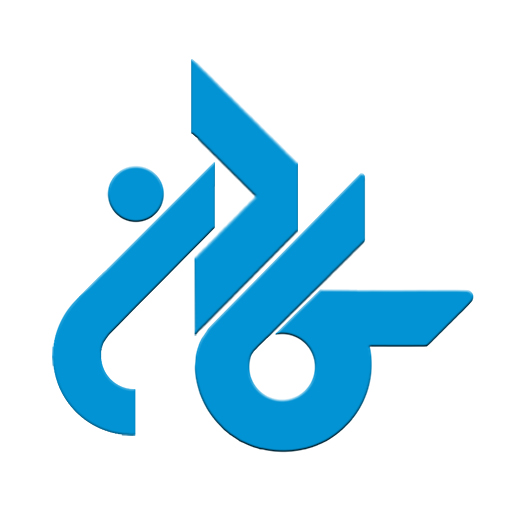
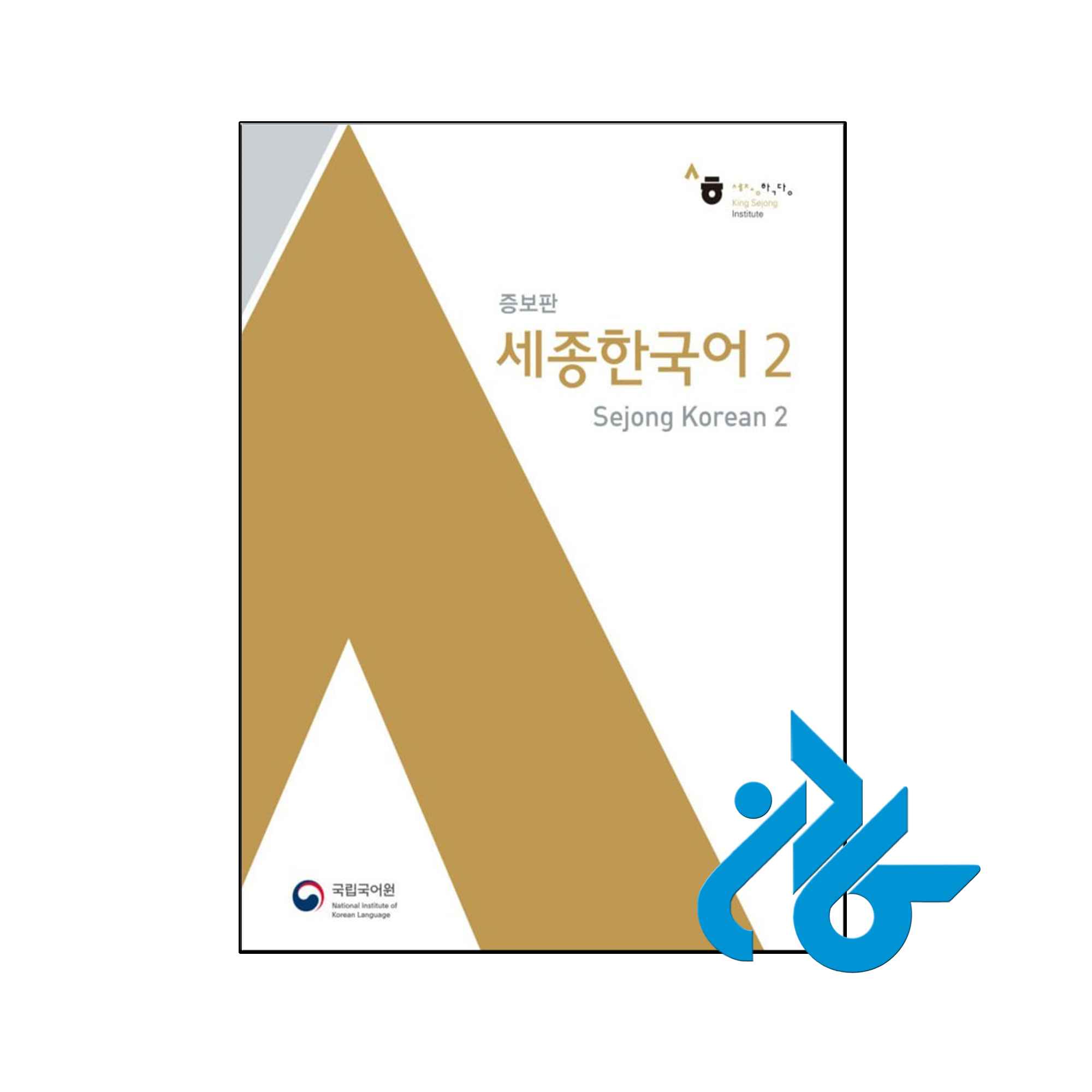
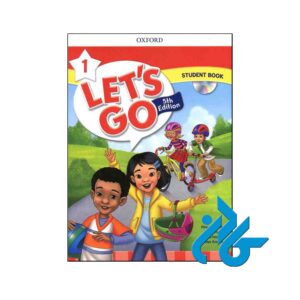
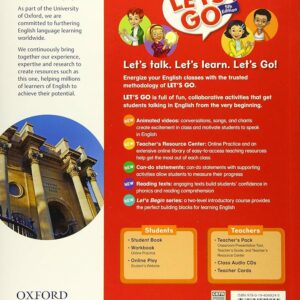
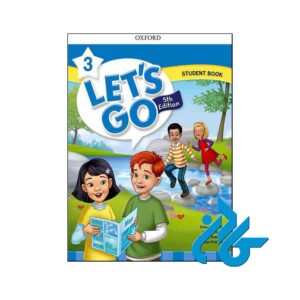
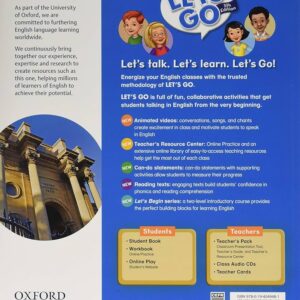
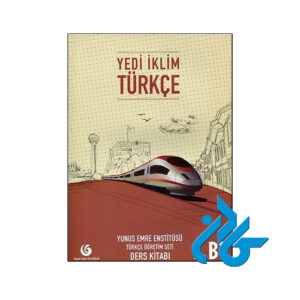
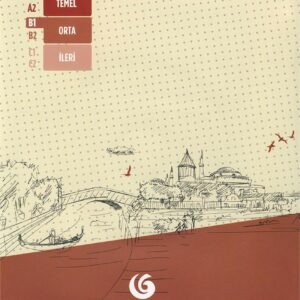
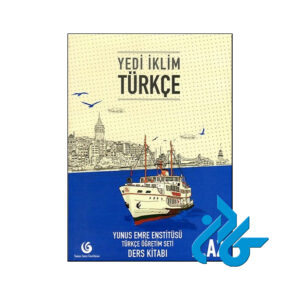
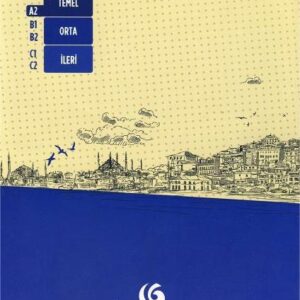
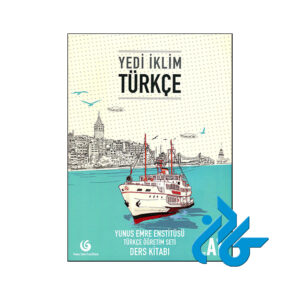
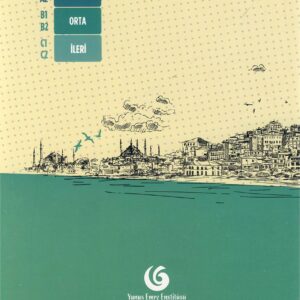
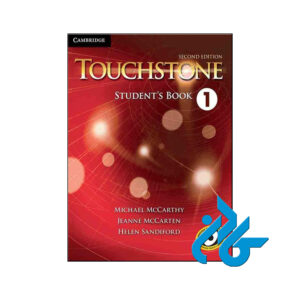
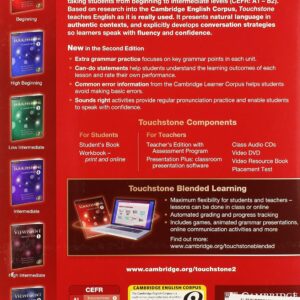
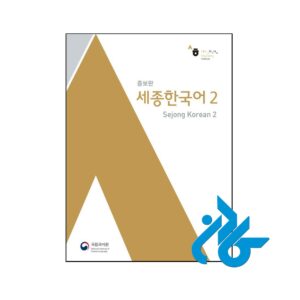
نقد و بررسیها
پاککردن فیلترهاهنوز بررسیای ثبت نشده است.